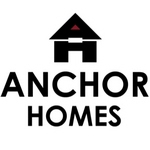‘This Is Unprecedented’: Why America’s Housing Market Has Never Been Weirder
In America’s largest, richest cities, home prices and rents are going in opposite directions.
By Derek Thompson
4/15/2021

If you think the U.S. housing market is behaving very, very strangely these days, that probably means you’re paying attention.
In almost any other year, a weak economy would cripple housing. But the flash-freeze recession of 2020 corresponded with a real-estate boom, led by high-end purchases in suburbs and small towns. Even stranger, in America’s big metros, home prices and rents are going in opposite directions. Home values increased in all of the 100 largest metros in the U.S., according to Zillow data. But in some of the richest cities—San Jose; Seattle; New York; Boston; Austin; San Francisco; Washington, D.C.; Los Angeles; and Chicago—rent prices fell, many by double-digit percentages. In many cases, the gap was absurdly large. In San Jose last year, home prices rose by 14 percent (the sixth-largest increase in the country) but the area’s rents fell 7 percent (the sixth-largest decline).
“I can’t think of a time when anything like this has happened,” Jeff Tucker, the senior economist at Zillow, said of the divergence between rental and home prices. “This is unprecedented.”
What’s going on? Some observers have pointed to the severe shortage of single-family houses that has resulted from the slower pace of building in the U.S. since the last real-estate crash. Short supply is clearly pushing up housing prices. Others point to plummeting interest rates that have encouraged people to seize the opportunity to get a cheap mortgage. And then there’s the wave of new young families seeking more permanent housing, as more Millennials enter their 30s.
These factors are all relevant. But none of them quite explains why the pandemic has created such an unprecedented disconnect between rents and home prices. Understanding this divergence begins with understanding the broader divergence of our “K-shaped” economy, in which the K represents the forking fortunes of the rich and poor during the pandemic. While many hourly workers in restaurants and physical stores have been hit hard by lost wages and unemployment, millions of knowledge workers in white-collar industries such as tech and finance rode out the pandemic by staying (and staying, and staying) at home. They relieved their cabin fever with a heavy dose of online real-estate shopping.
In the last year, a lot of middle- and high-income households took advantage of the pandemic to accelerate their plans to buy first homes, second homes, and vacation homes. The typical 2020 homebuyer made nearly $100,000, a significantly higher income than the average homebuyer had in past years. “The pandemic and the feeling of not having enough space combined with low mortgage rates gave a lot of higher-income families a reason to pull forward home purchases that they were thinking about making in the next few years,” Tucker said. Plus, many of these families were competing to purchase the same sorts of houses: Something bigger with extra rooms to convert into work-from-home offices, a large outdoor space, and, whenever possible, a pool.
As the COVID-inspired flight to larger houses boosted home prices, the pandemic took a sledgehammer to urban amenities, and downtown rents fell. Restaurants, bars, and museums have closed, and remote work has made living close to the office less valuable. The typical new entrants into cities, who would usually absorb any excess supply, have all been punished by the pandemic in their own way. Immigration has declined, and some immigrants working in COVID-affected industries have had to move or double up with family. Many young college graduates have waited out the pandemic at a parent’s house. And transient residents with the option to decamp temporarily to the suburbs have done so. It’s all there in the U-Haul data: Arrivals to New York fell 35 percent last year, according to the company, and no state saw more net emigration than California.
All of this has crushed demand for rented apartments in cities. But something else has accentuated this historic divergence between downtown rents and suburban housing prices: the quirky habits of the Millennial generation.
“There are an unusual number of people around age 30 in America right now, and they have been unusually likely to live in central cities,” Tucker said. Indeed, the number of 30- to 39-year-olds in America is about to reach its highest point in history; and those are prime home-buying years. One analysis of New York City by the real-estate website StreetEasy found that rents, while increasing somewhat in the low-income parts of the city hit hardest by the pandemic, plummeted in richer neighborhoods. That fits one of the big stories of the pandemic: High-income Millennials using 2020 to trade their downtown apartment rentals for urban and suburban homes.
In some ways, the massive rent-own divergence in 2020 highlighted one of the fundamental tragedies of the pandemic, which has so sharply exposed America’s preexisting social inequalities. The plague disproportionately infected and impoverished minority and low-income hourly workers. But for some rich households, it created the perfect opportunity to spring for that Florida vacation house, or that suburban lot with the south-facing pool.
This strange moment for American housing isn’t all bad, though—and, in a few years, some very good things could come from it. A historic imbalance between rents and home prices could set the stage for an urban renaissance led by younger and more middle-class residents. The big drop in Manhattan rental prices is already luring back younger residents. For those who love cities—and I do—downtown living is a steal right now, and New York City in particular hasn’t been this good a deal in decades.
According to Chris Salviati, an economist with the online rental market Apartment List, rents are rising again in almost all of the hardest-hit rental markets, including San Francisco, Boston, and Washington, D.C. As rents increase, so will buyer’s remorse. We are already seeing the emergence of a new genre of feature profile in major newspapers: the city slicker who moved to the suburbs, and hates it there.
One needn’t frame every story as a tale of generational warfare, but the generational angle to this story might be the most enduring one. The last decade has punished Millennials with a Great Recession, a slow recovery, and a housing shortage. But the next decade could see Generation Z moving into cities that offer great bargains for young residents, even as they benefit from a booming economy, full employment, and a surge in housing construction.
Source: https://www.theatlantic.com/ideas/archive/2021/03/why-are-housing-prices-and-rents-down/618212/
Is a Housing Market Crash Possible in 2021?
By Mark Mathis
4/15/2021

With the real estate market experiencing surging prices, scant inventories and a backlog of new home construction, many consumers are wondering if what’s gone up must come back down—in other words, are we headed for another housing market crash? Let’s take a closer look.
Think Back to the Great Recession
The unforeseen housing market crash 15 years ago ignited a worldwide recession. Fueled by low interest rates, loose mortgage-lending standards and the nation’s unshakeable faith in homeownership, home values rose at record rates year-after-year. When the housing bubble burst, roughly nine million families lost their homes to foreclosure or short sale between 2006 and 2014. Housing values plunged 30% or more, homeowners lost a collective $7 trillion and it took nearly a decade for most markets to recover. Even today, several real estate markets have not fully recovered.
With the robust market activity we’ve seen lately, could there be a market crash in the near future? The short answer is “not likely.” Today’s market book cannot be sustained completely, but a crash as serious as the one from 15 years ago is unlikely because of a few important factors.
Factor No. 1: More Stringent Lending Standards
Loose mortgage lending practices ultimately brought down some of the nation’s largest banks and mortgage companies. The fallout forced Congress and federal regulators to make significant adjustments that have fundamentally changed how mortgage lending is regulated.
Since then, standards have been raised and the process of obtaining a mortgage is now more transparent. The “anyone can get one” loans of the past are illegal; now borrowers undergo stricter income, credit and asset checks. An entirely new regulatory agency, the Consumer Financial Protection Bureau, was created to enforce this new regulatory framework. Lenders who do not comply with these standards may face heavy penalties.
As a result, the housing finance marketplace is now more robust and safer than it was 15 years ago. Any dip in the housing market will be cushioned by these stricter regulations.
Factor No. 2: Pandemic Mortgage Forbearance
When the housing market crashed in 2007, the influx of foreclosures pumped housing supply into areas with falling prices and weak labor markets, while also preventing recently foreclosed borrowers from re-entering the market as buyers. According to the Federal Reserve, foreclosures during a time of high unemployment could depress prices, plunging homeowners across the country deeper into negative equity.
However, in the pandemic era, the effects of mass unemployment bear little resemblance to the Great Recession, thanks in large part to forbearance programs that have allowed homeowners to postpone their monthly mortgage payments without suffering penalties.
As of early March 2021, 2.6 million homeowners’ mortgages were in such forbearance plans. As the pandemic economy has slowly recovered, many homeowners have resumed their employment, and thus their home payments. According to CoreLogic, by the end of 2020, overall mortgage delinquencies declined 5.8% due to the forbearance program. The share of mortgages 60 to 89 days past due declined to 0.5%, lower than 0.6% in December 2019.
Housing Market Crash
It’s worth noting that serious delinquencies—defined as 90 days or more past due, including loans in foreclosure—increased when owners who owed large amounts left forbearance. By year end 2020, the serious delinquency rate was 3.9%, up from 1.2% in December 2019.
Factor No. 3: Most Homeowner’s Cushion—Equity
Equity is the difference between the current market value of your home and the amount you owe on it. In other words, it’s the portion of your home’s value that you actually own. Equity can be an incentive to stay in your home longer; if prices rise—something we’ve seen almost universally across the country in recent months—your equity increases, too.
Why does this matter? Simply put, higher levels of equity cushion homeowners from default when home values fall.
Over the past decade, American homeowners have enjoyed housing stability and growth, building up large home equity reserves. In the third quarter of 2020, the average family with a mortgage had $194,000 in home equity, and the average homeowner gained approximately $26,300 in equity over the course of the year. In contrast, 2009 saw nearly a quarter of the nation’s mortgaged homes valued for less than the amount their owners actually owed on those mortgages.
Factor No. 4: Price Growth Will Slow Down, but Continue
The sales boom followed the outbreak of the COVID-19 and surprised many real estate economists. Like most other business sectors, real estate was expected (if not required in many locations) to lock down. But by mid-April, sales were soaring as buyers, many of them millennials, took advantage of record-low mortgage interest rates. Through the remainder of 2020, rates remained below 3%, and existing home sales reached their highest level in 14 years.
A Moving Target
While no one can say for sure what will happen with the real estate sector, most experts are confident that we’ll experience a market dip, but certainly not a crash. In the meantime, there’s plenty of work available for motivated real estate professionals. Find out how Homes.com can help you connect with the current market of active buyers and sellers here!
Source: https://rismedia.com/2021/03/25/housing-market-crash-possible-2021/
Flat-Fee MLS Listing Service in Northern VA

Helping For Sale by Owner (FSBO) & For Rent by Owner (FRBO)
DIY Landlord – Renting out Properties Safer and Quicker!
By David Chen
4/15/2021
Q. We purchased our first home some years ago, and are about to move to another home. We are considering to keep our first home as an income property. We heard of the free ads on CRAIGSLIST and zillow.com, but some landlord friends told us it could be a challenge to find qualified tenants through CRAIGSLIST and zillow.com. Is there any way to rent our property out quicker and safer with minimum cost? We are the kind of persons who would like to try things ourselves, and have some spare time.
A. You may have already done the initial research and have figured out the range of monthly rent of your property.
If the monthly rent is low such as $1600.00 or below, you may want to do it through CRAIGSLIST, https://postlets.com/, zillow.com, or similar web sites. The renters interested in the low-priced rentals may not go to the Realtors community for assistance.
If the monthly rent is $1600.00 or above, you may want to consider listing your rental on brightmls.com for the Realtors community to market it for you.
Bright MLS is made up of nine forward thinking MLSs (43 Associations) in the Mid-Atlantic region who put aside their differences and came together with a shared vision to help solve MLS market overlap and empower everyone to get more out of the MLS. Bright will serve parts of 6 states plus Washington, D.C. encompassing 85,000 real estate professionals who serve over 20 million consumers and facilitate approximately 250,000 transactions a year that are valued at more than $70 billion.
Dozens of public real estate websites (such as: zillow.com, redfin.com, brightmlshomes.com, etc.) pull data from brightmls.com through syndication. In a few hours, your listing will show up on dozens of websites and will get the maximum exposure. It is a lot quicker and safer finding qualified tenants than doing it through CRAIGSLIST and zillow.com. You may talk with a Realtor for assistance. Please be aware some Realtors take rental jobs, some don’t.
Over the years I have helped some landlords in the community renting their properties out with very low cost. A popular arrangement is to help the landlords ‘DIY’, which has been working well for those experienced landlords.
The good side of ‘DIY’ is that the landlords can ‘screen’ the potential tenants from the very beginning, have 100% control of the whole process, and enjoy the feeling of “on top of things”.
If you prefer minimum service, I can help you ‘DIY’:
1. I provide CMA, list your rental on brightmls.com, put a realtor’s lockbox at the front door if needed, provide the access log (if needed), support you through the whole process.
I charge a flat fee for the minimum service.
2. If you would like me to prepare the lease or review the lease, there is another reasonable flat fee. This service is optional.
3. You answer phone calls, work with the tenant (if the tenant doesn’t have an agent) or the tenant’s agent, run credit check, verify employment, check references, etc.. You pay the tenant’s agent (if there is one) directly on the move-in date – usually 25% of first-month rent.
If you need full-service, the commission is first-month rent – which includes the commission to be paid to the tenant’s agent.
If you need any customized service (between minimum service and full-service), we can work out an agreement.
Some information:
CMA stands for Comparable (some called Competitive) Market Analysis, that will help you determine the market value of your property for sale or for rent.
I use Sentry-key lockbox. Any Realtor with membership of NVAR (Northern Virginia Association of Realtors) or any other VA Realtors association can access and show the property.
The access log tells when the agents enter the property and their contact info. which can help you follow up with the agents.
If you like the DIY experience, I would recommend you to use the minimum service.
Please feel free to reach me if you need any assistance.
—
David Chen
Realtor (Licensed in VA) | Neighborhood Specialist (McLean, Falls Church, Vienna)
Libra Realty, LLC
dchenj@gmail.com
703-395-5406
WeChat ID: dchenj2015

Last update: 4/15/2021
Websites that will show your flat fee mls listings
4/15/2021
Almost all real estate websites that offer the ability to search brokerage listings use a data feed from the MLS called Internet Data Exchange (IDX) to pull in listing data. Depending on the number of sites tapping into your MLS, your listing could appear on hundreds of websites. We do not control the content of any of the websites listed below. updated periodically & subject to change at any time Here are some examples of national websites by area that pull listings from the MLS:
This block contains unexpected or invalid content.Attempt Block Recovery
- Zillow
- Trulia
- Move.com
- MSN.com
- REALTOR.com
- REMAX.com (in markets where they have an office)
- ZipRealty.com (in markets where they have an office)
- Yahoo.com / Prudential (in markets where they have an office)
- Google Base
- Redfin
- Yahoo Classifieds
- AOL Real Estate
- HomeGain
- Lycos
- Oodle
- Hotpads
- HomeSeekers
- ColdwellBanker.com
- Cenutry21.com
- HouseFront
- CondoQuickFind
Here are just a few examples of local media websites that pull listings from the MLS in their area:
- AZCentral.com (Phoenix, Arizona)
- Chron.com (Houston, Texas)
- DallasNews.com (Dallas/Fort Worth, Texas)
- DenverPost.com (Denver, Colorado)
- LATimes.com (Los Angeles, California)
- MySA.com (San Antonio, Texas)
- RGJ.com (Reno, Nevada)
- SignOnSanDiego.com (San Diego, California)
- StarBulletin.com (Honolulu, Hawaii)
- Tucson.com(Tucson, Arizona)

Here are just a few examples of local brokerage websites that pull listings from the MLS in their area:
- BishopRealty.com (Payson, Arizona)
- Boulderco.com (Boulder, Colorado)
- C21MoneyWorld.com (Las Vegas, Nevada)
- ColdwellBanker-Idaho.com (Coeur d’Alene, Idaho)
- Ebby.com (Dallas, Texas)
- Floberg.com (Billings, Montana)
- LongRealty.com (Tucson, Arizona)
- SantaFeSIR.com (Santa Fe, New Mexico)
- TB.com (Spokane, Washington)
Additionally, here are just a few examples of local REALTOR® Boards or MLS’s that have a public view portal. (Not all boards have this feature):
- ABQREALTORS.com (Albuquerque, New Mexico)
- AlaskaRealEstate.com (Anchorage, Alaska)
- AustinHomeSearch.com (Austin, Texas)
- HAR.com (Houston, Texas)
- HavasuRealtors.com (Lake Havasu City, Arizona)
- HICentral.com (Honolulu, Hawaii)
- mlslistings.com (San Jose, California)
- SFAR.com (Santa Fe, New Mexico)
- TARMLS.com (Tucson, Arizona)
These are just examples. Your listing could literally show up at hundreds of other websites.
Source: https://www.congressrealty.com/Flat-Fee-MLS-Listings/Sites-with-Listings/default.aspp



